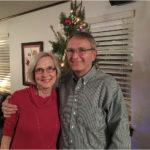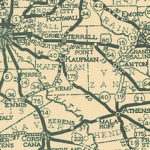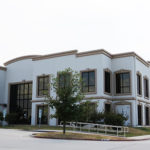When Diana Garland arrived at Baylor University in 1997, a Texas Baptist asked me to describe her. Three words jumped to mind.
Force. Of. Nature.
Across her lifetime, particularly during her tenure at two splendid schools of social work, Diana was the powerful antithesis of that greatest force of Texas nature—a tornado. How to describe her? Creative, redemptive, faithful, generous, healing, wise, compassionate, constructive and transformative.
She embodied all those virtues until cancer took her physical life at the age of 65 on Sept. 21.
Of course, I didn’t always know she was like that. When we met, I thought of Diana as one of several “Sunday widows” at Crescent Hill Baptist Church in Louisville, Ky., where we were members.
Worshipping in ‘their’ pew
Even then, she was as equally esteemed as her husband, David, on the faculty of Southern Baptist Theological Seminary. But on Sunday mornings, David usually drove off to preach somewhere. And Diana took young Sarah and John to church. In my mind’s eye, I see them worshipping in “their” pew, Sunday after Sunday.
A handful of years later, Diana and David still taught at the seminary, and I returned to Louisville to edit the Kentucky Baptist newspaper, the Western Recorder. We attended church together again. But the battle that raged across the Southern Baptist Convention hurled us into a deeper relationship.
The young president of Southern Seminary infamously declared war on the Carver School of Church Social Work, which Diana led as dean. What he actually said was this: “The culture of social work and the culture of theological education are not congruent.” And he dropped three bombs in succession. He denied tenure to one of the school’s young stars. He refused to hire one of the most esteemed social work educators in the nation. And then he fired Diana as dean.
Sign up for our weekly edition and get all our headlines in your inbox on Thursdays
In those days of trauma and turmoil, Diana demonstrated the heart of a courageous Christian. In so doing, she taught her students—as well as all of us fortunate to observe her closely—tremendous lessons from the heart of a superb social worker. She responded to pressure with grace and dignity. But she also stood strong for principles, for her students, for her colleagues and for the social work profession. She spoke with clarity, truth and power. She spread a mantle of care and compassion over her students and faculty colleagues, enduring the denunciations of their detractors and defending their calling to serve those whom Jesus called “the least.”
Bravery and brilliance
Diana handled the Southern Seminary/Carver School crisis with bravery and brilliance, and I admired her enormously. But hard as it might have been to imagine, my esteem for her grew in the years that followed.
Diana refused to allow that painful episode to define her. She remained faithful, optimistic and resilient.
Then God multiplied her ministry. God brought her to Baylor. The decimation of the Carver School was painful. But when she took the reins of the Baylor School of Social Work, she gained an opportunity to train many times more social workers than she ever could have taught at the seminary. She took that opportunity and ran with it so fast she made Baylor’s Heisman winner, Robert Griffin III, look like a turtle.
That’s where her natural energy setting—Force of Nature—really kicked in. Throughout her tenure, the school grew in students, faculty and staff. It raked in millions of dollars in grants and other funding. It added areas of study and centers and started offering a Ph.D. But more than all that, it shaped the lives of hundreds of young people who now serve as social workers all around the world.
Through all that growth, Diana focused the School of Social Work—which since last spring has borne her name—on relationships and the worth of individuals. While the university started referring to itself as “Baylor Nation,” the operative word for the social work school remained “family.” Its annual family dinner always feels like a warm and nurturing reunion.
Staggering impact
Suppose we could know how many people came to Baylor and entered social work because Diana came to Baylor to teach them. Then suppose we could imagine how many people all those social workers will serve in the name of Jesus. And try to think about those people’s families, friends and jobs, all blessed because of the love they received. Our imaginations would be staggered, wouldn’t they?
One of the great moments of my life happened when Diana called and asked me to serve on the School of Social Work Board of Advocates. In a way, it was a rueful experience: It made me wish I’d been born later, so I could have attended Baylor and studied to be a social worker under Diana Garland.
That didn’t happen, but I’m so thankful to have come along in time to be her friend. She became a mentor of Christian grace, intelligence, energy and bravery, whom I will love and admire forever.
This column includes material originally published in the latest edition of The Journal of Family and Community Ministries, produced by the Diana R. Garland School of Social Work at Baylor University. To obtain a copy, email [email protected].














We seek to connect God’s story and God’s people around the world. To learn more about God’s story, click here.
Send comments and feedback to Eric Black, our editor. For comments to be published, please specify “letter to the editor.” Maximum length for publication is 300 words.